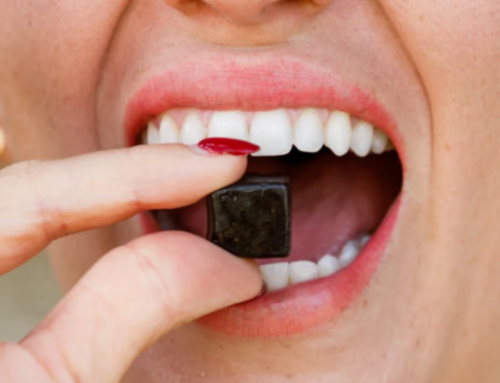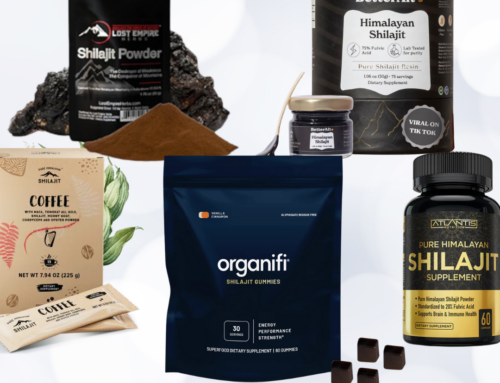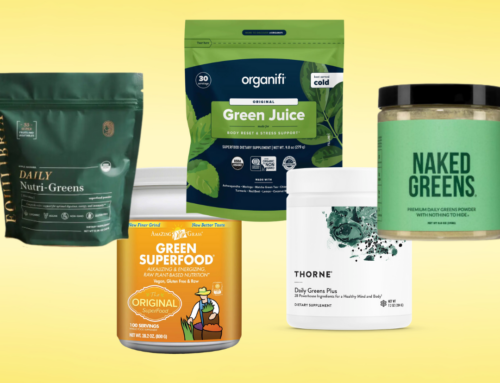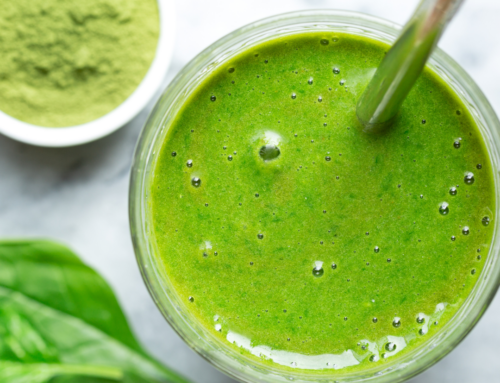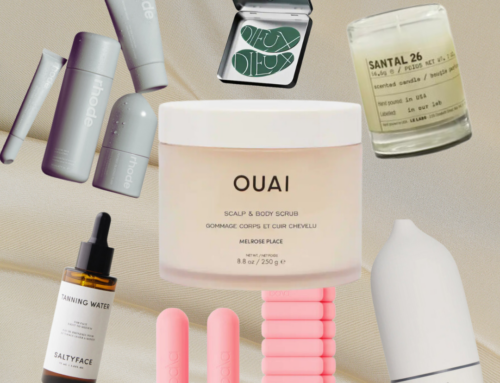Our team recommends products that we love and feel you will too. If you click through links we provide, we may earn a commission.
The rise in diabetes and blood sugar awareness has coincided with lots of sugar substitutes on the market. While these swaps look great on paper, there are pros and cons to each non-nutritive sweetener product. We spoke to dietitians to get the scoop on the differences between sucralose vs. stevia and how you might use them in your daily life.
What is Sucralose?
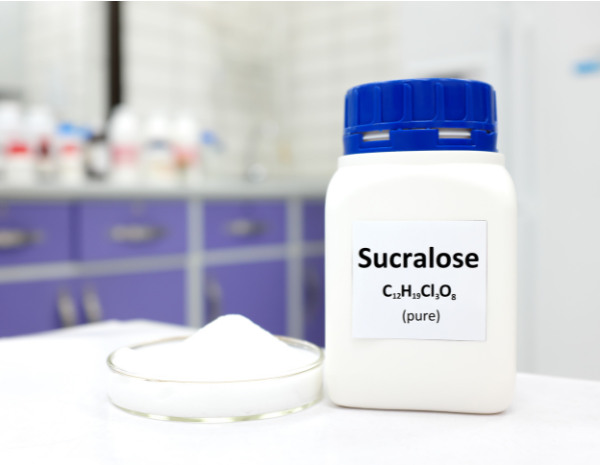
Sucralose, also known as Splenda, is a calorie-free sweetener commonly used to keep added sugar low in foods and beverages. Six-hundred times sweeter than regular sugar, it is manufactured from a process that starts with table sugar and modifies it, comments Vandana Sheth, RDN, CDCES, FAND, registered dietitian and diabetes specialist who owns a nutrition consulting business in Los Angeles.
Sucralose Pros
The advantages of sucralose include: its sweetness, stability under heat, and shelf life. Sucralose is incredibly sweet, approximately 600 times sweeter than sucrose, or table sugar, allowing for the use of smaller amounts to achieve desired sweetness levels in foods and beverages. Sucralose maintains its sweetness even when exposed to high temperatures, Sucralose is heat stable, so it can be used in baking and cooking without losing its
Sweetness, says Claire Rifkin, MS, RD, a NYC-based women’s health dietitian and founder of a telehealth private practice. Thus, products containing sucralose tend to have a longer shelf life due to its stability, which helps maintain the quality and taste of foods and beverages over time, reducing the need for preservatives and additives.
Sucralose Cons
The disadvantages of sucralose include: controversy over health side effects long term and taste or aftertaste for some. While sucralose is considered safe for consumption by regulatory agencies such as the FDA and EFSA, some studies suggest potential health concerns, including effects on gut health, as well as controversy regarding its long-term safety. “Some people may experience digestive discomfort after consuming sucralose, such as bloating or gas, especially at higher intakes. There is some emerging research that links sucralose consumption to a disrupted gut microbiota, Rifkin shares.
Many people enjoy the taste of sucralose, but some individuals may find it less appealing compared to natural sweeteners like sugar or Stevia. Sucralose can sometimes have a slightly different taste profile or leave an aftertaste, which may not be preferred by all consumers.
What is Stevia?
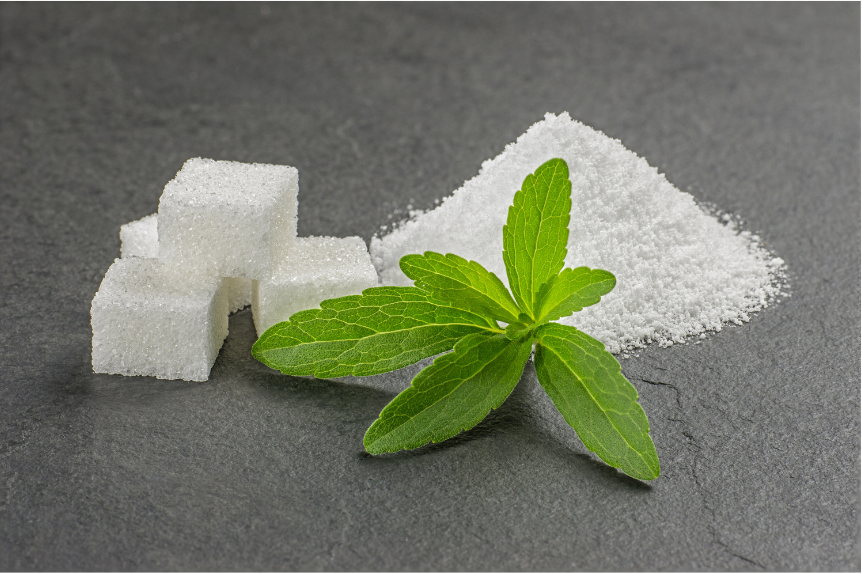
Stevia is derived from a plant, and it is significantly sweeter than table sugar – with some estimates being 250-300 times sweeter, says Amy Beney MS RD CDCES, dietitian and owner of Nutrition Insights.
Stevia Pros
Stevia, like sucralose, is a zero-calorie sweetener making it a suitable option for those aiming to reduce calorie intake or manage weight, says Brittany Werner, MS, RDN, a dietitian of Working Against Gravity. Some prefer stevia as a more natural sweetener since it’s derived from a plant compared to other sweeteners that are chemically altered. Stevia does not raise blood sugar levels, making it a safe option for people with diabetes or those following a low-carbohydrate diet.
Stevia Cons
Some folks may experience a bitter or licorice-esque aftertaste with stevia, especially in higher quantities. “Like other sugar substitutes, high amounts of stevia may lead to gastrointestinal discomfort, such as bloating or gas. Pure stevia extract can be potent, so it is often blended with other ingredients or bulking agents to achieve a more sugar-like texture,” Werner explains. Stevia is not a one-to-one replacement for sugar in terms of quantity, so it may impact the texture and moisture of foods when used as a sugar replacement in baked goods, she cautions.
Key Differences between Sucralose and Stevia
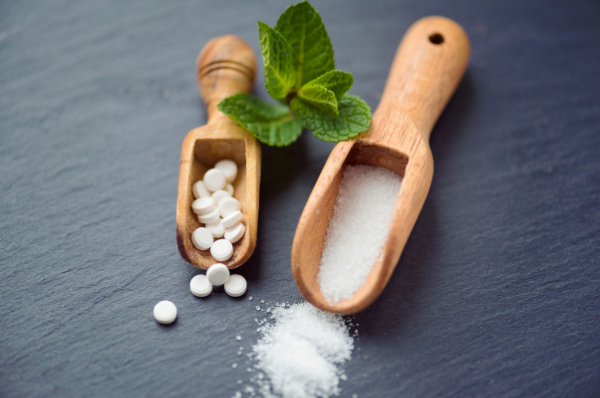
“They are both labeled as calorie-free, but sucralose contains a few calories. According to USDA guidelines, it can be labeled “calorie-free” since it contains less than 5 calories per serving,” says Melissa Mitri, MS, RD, Nutrition Writer and Weight Loss Expert. Sucralose is twice as sweet as stevia, about 600 times sweeter than sugar, while stevia is roughly 300 times sweeter than sugar. If you enjoy intense sweetness, you might prefer sucralose.
Sucralose and stevia don’t usually raise blood sugar, but some versions contain maltodextrin, which may worsen insulin resistance or cause blood sugar spikes, Mitri adds. Some stevia products also include erythritol, a sugar alcohol, that can cause gas, bloating, and pain.
Caloric Content
Sucralose and stevia are both non-nutritive sweeteners that offer alternatives to sugar with minimal impact on calorie intake. Sucralose contains no calories as it passes through the body without being metabolized, while stevia’s sweet compounds, called steviol glycosides, are not absorbed and thus do not contribute to calorie intake either. These characteristics make both sucralose and stevia popular choices for individuals aiming to manage their weight or reduce sugar consumption.
By substituting sucralose or stevia for sugar in foods and beverages, individuals can satisfy their sweet cravings without adding extra calories to their diet. “Reducing calories may aid in your weight loss goals, but there is limited research on the long-term effects of these items. It is important to use these products in moderation and limit overall sugar intake,” Beney offers. It’s important to remember that weight management involves various factors beyond calorie intake, and a balanced approach that includes healthy eating habits and regular physical activity is essential for overall well-being.
Health Considerations
While much of the research suggest these sweeteners are generally safe, there’s still a lot of debate. Some research hints at potential issues with sucralose, like its impact on gut health, but overwhelmingly, most research shows it’s perfectly safe in moderate doses. Stevia, on the other hand, seems promising with a possible anti-inflammatory and antioxidant benefit, but we’re still not sure about its long-term effects or how it impacts our health long term.
“Some studies, mainly animal studies, suggest that sucralose may negatively affect the balance of gut microbiota, potentially leading to decreased numbers of beneficial bacteria. However, the results are not conclusive, and more research is needed, especially in humans,” Rifkin comments.
These products are low in calories and have a minimal impact on blood sugar, making them an excellent alternative to high calorie, high sugar food and beverages for those who want to make the swap.
Taste Comparison
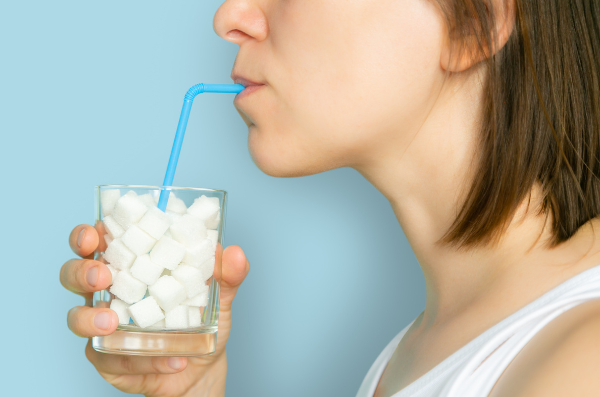
Sucralose is 600 times sweeter than sucrose, with no bitter aftertaste, making it widely accepted. Stevia®, a registered trademark derived from the stevia plant, using steviosides and rebaudioside A as the main sweetening agents, and it is 200 times sweeter than sucrose, says Toby Smithson, registered dietitian and certified diabetes care and education specialist, founder of Diabetes EveryDay and author of Diabetes Meal Planning and Nutrition for Dummies.
Taste Profile of Sucralose
Sucralose tends to present a sweeter, chemical-like aftertaste. Sensitivity to aftertastes varies among individuals, though taste buds may adapt with time and learn to tolerate them. Many describe sucralose as “hyper-sweet” if they’re not used to the aftertaste.
Taste Profile of Stevia
Both sweeteners leave an aftertaste, yet stevia is often perceived as more intense. Stevia carries a bitter aftertaste that some say has licorice or menthol undertones. Particularly in baking, stevia’s aftertaste is present and may be a deterrent to those who are sensitive to it.
Best Uses and Applications
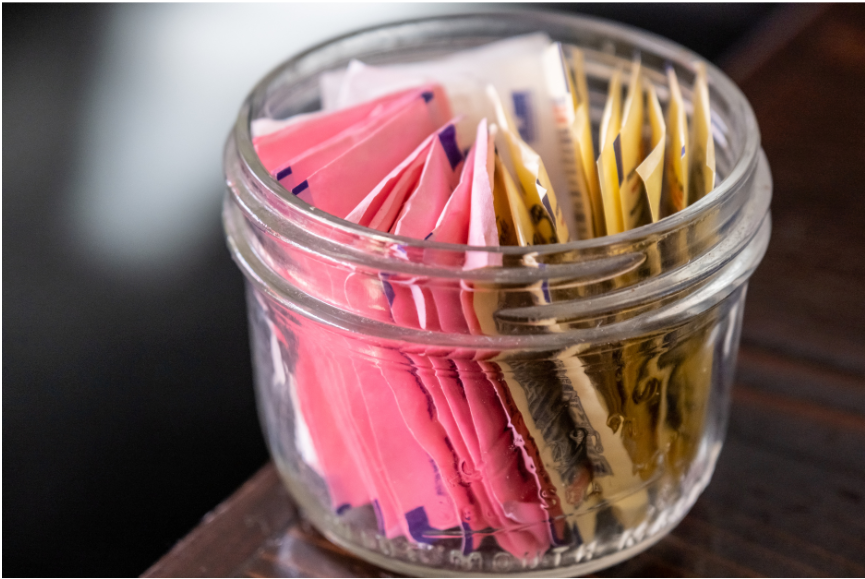
Stevia is often preferred for its natural sourcing and zero-calorie content, making it suitable for beverages, baking, and desserts. Sucralose, on the other hand, is prized for its intense sweetness without a bold aftertaste, making it versatile for beverages, baking, and packaged foods where calorie reduction is desired.
Choosing the Right Sweetener for Your Needs
Stevia and sucralose each have distinct uses and applications based on their taste profiles and characteristics:
Stevia
- Beverages: Stevia is commonly used to sweeten beverages such as teas, flavored waters, and juices.
- Baking and Cooking: Stevia can be used in baking and cooking as a sugar substitute, particularly in recipes where a slightly herbal or licorice-like flavor is acceptable.
- Desserts: Stevia is suitable for sweetening desserts such as puddings, yogurts, and fruit-based dishes.
Sucralose
- Beverages: Sucralose is frequently used to sweeten beverages such as soft drinks, sports drinks, and flavored water.
- Baking and Cooking: Sucralose can be used in baking and cooking as a sugar substitute, offering sweetness without the calories and typically without altering the taste of the final product.
- Packaged Foods: Sucralose is commonly found in a variety of packaged foods, including snacks, cereals, and dairy products, to enhance sweetness without adding calories.
- On-the-go Sweetening: Sucralose-based sweeteners are convenient for on-the-go use, available in packets or liquid forms for adding to coffee, tea, or other beverages.
Sucralose & Stevia FAQ’s
Are sucralose and stevia safe for consumption?
The FDA considers sucralose safe, but a few studies that have been published may indicate otherwise, Megan Byrd, RD shares. Possibly, sucralose may be linked to an increase in cancer risk because of the way it interacts with fat molecules at higher temperatures, she shares.
Stevia has been shown to be fairly safe for most everyone, but people with diabetes should be aware that some Stevia products still contain dextrose and starches, which can increase blood sugars, Byrd cautions.
Is sucralose of stevia better for weight management?
For weight management, either sugar substitute will do the job. Both are low in calories and offer a weight loss-friendly sweetener alternative to a high sugar food or beverage.
Do sucralose and stevia have an aftertaste?
Both sweeteners have an aftertaste, but many people find stevia to be harder to overcome, Mitri tells us. Stevia may leave a slightly bitter aftertaste, whereas sucralose often has a sweeter but somewhat chemical-like aftertaste. Sensitivity to these aftertastes varies for everyone, but your taste preferences can adapt with time.
Can sucralose and stevia be used in baking and cooking?
Byrd summarizes: “Both are sold and marketed for baking. As mentioned, sucralose can increase cancer risk when used in baking recipes so I recommend using caution when baking with sucralose. Stevia itself is not linked to many health concerns except GI distress.”
Are there any health concerns associated with sucralose or stevia?
More research is needed into the impact of these nonnutritive sweeteners on overall health, but based on what we know now, it’s best to consume them in moderation and to put more focus on training your palate to reduce the amount of both added sugar and sugar substitutes as well, Mitri concludes.
Conclusion
Overall, low and no-calorie sweeteners including sucralose and stevia stand out as extensively researched ingredients on a global scale, Sheth says. We have a wealth of high-quality scientific evidence supporting their safety and endorsement by health and regulatory agencies across the globe, including the FDA, she continues. However, you’ll want to consider your personal taste preferences, lifestyle, and health concerns when finding the sweetener that’s right for you. Speak with a dietitian to create a personalized nutrition plan, and consume both added sugars and sugar substitutes in moderation.
Sign Up For Our
Deals Newsletter
Receive exclusive deals from our favorite brands.


